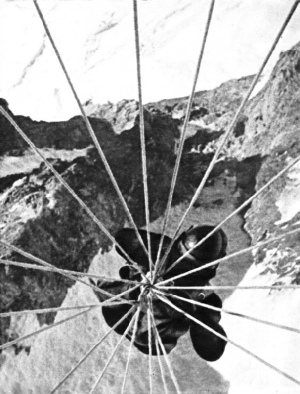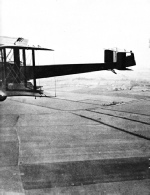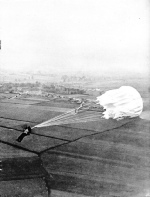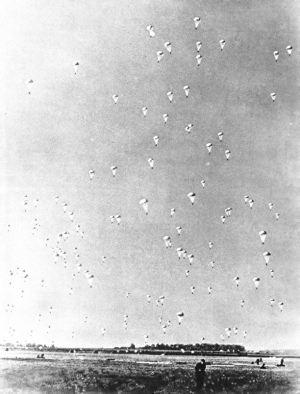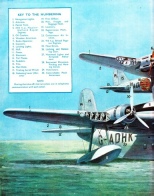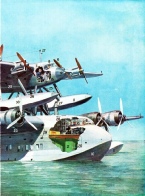

© Wonders of World Aviation 2015-
Part 1
Part 1 of Wonders of World Aviation was published on Tuesday 8th March 1938, price 7d.
It was a normal issue of 32, not 36 pages, unlike the other series. This part included a superb folding colour plate showing a cutaway drawing of the Short-Mayo Composite Aircraft which accompanied an article on the Short-Mayo Aircraft . There was also a central photogravure supplement illustrating the article on Parachute Landings. All these are illustrated below.
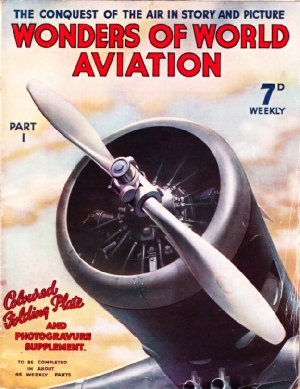
The Cover
The cover shows an unidentified aircraft propeller and engine.
Contents of Part 1
Foreword
“Filling the World With Amazement”
How an Aeroplane Flies
Parachute Landings
Parachute Landings
(photogravure supplement)
Parachute Landings
Photogravure Supplement
HOW THE EARTH LOOKS to the parachutist after the canopy has opened. This remarkable photograph was taken with an automatic camera fixed inside the parachute. At one time it was thought that a man falling or diving from a great height was incapable of thought or action after he had fallen several hundred feet. This was disproved, however, by Leslie Irvin, an experienced high diver. He maintained that if a diver could control his body during a dive of less than 100 feet, it should be possible for a parachutist to control mind and muscle while jumping or diving from a height of several thousand feet. Irvin put his theories into practice in an experimental dive in 1919, when he became the first man to open a parachute while falling.
Parachute Landings: Photogravure Supplement
AFTER THE PARACHUTE HAS OPENED. The process of opening is so rapid that it is impossible to see it with the eye. It has been filmed with a slow-motion camera, and the film showed that the air in the upper part causes the canopy to open from the apex to the periphery. A parachute lands with the wind, and therefore the parachutist must face the wind so that he can watch his descent. If he is drifting backwards he turns the parachute. To do this he tugs the shrouds to pull down the edge of the canopy in the direction in which he wants to turn. He then grasps the shrouds on the opposite side and, without pulling down, gives the parachute a twist in the desired direction, turning it at the same time.
Parachute Landings:
Photogravure Supplement
PARACHUTE DRILL in the Russian Army. This photograph shows some 100 parachute jumpers in the air at the same time. Others who have landed have unbuckled their harnesses and folded the parachutes. In many parts of the USSR parachute jumping is a popular sport, and the public is provided with parachute towers for training purposes.
